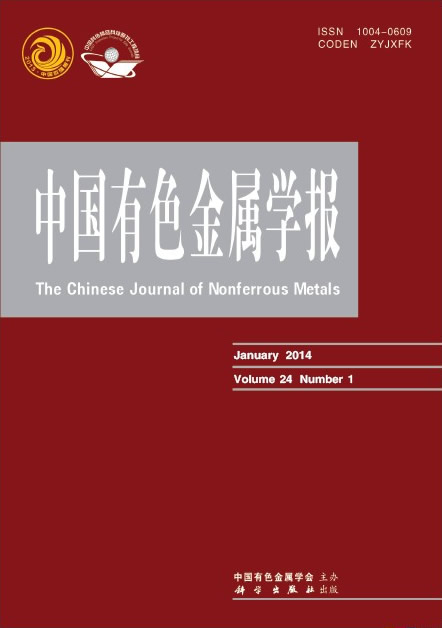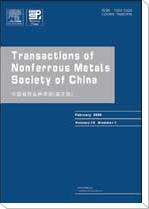中国有色金属学报(英文版)
Transactions of Nonferrous Metals Society of China
| Vol. 35 No. 9 September 2025 |
(1. State Key Laboratory of Powder Metallurgy, Central South University, Changsha 410083, China;
2. Zhuzhou Cemented Carbide Cutting Tools Co., Ltd., Zhuzhou 412007, China)
Abstract:The effect of W-doping on the structure and properties of TiAlSiN coatings was investigated through scanning electron microscopy, X-ray diffraction, differential scanning calorimetry, and nanoindentation. Tungsten doping in the coatings forms both substitution solid solution of Ti and/or Al in TiAlN and W simple substance. W-addition improves the surface quality of the coatings. Ti0.46Al0.45Si0.09N, Ti0.43Al0.46Si0.08W0.03N, and Ti0.41Al0.46Si0.07W0.06N present similar hardness of (29.1±0.4), (29.7±1.1), and (30.2±1.0) GPa, respectively. During annealing, Ti0.41Al0.46Si0.07W0.06N achieves peak hardness of (35.3±1.0) GPa at 1100 °C, whereas those of Ti0.46Al0.45Si0.09N and Ti0.43Al0.46Si0.08W0.03N are only (33.1±0.8) and (33.9±0.8) GPa at 1000 °C. Furthermore, moderate W-addition (3 at.%) upgrades the oxidation resistance of TiAlSiN. After oxidation at 1000 °C for 10 h, the oxide thicknesses of Ti0.46Al0.45Si0.09N, Ti0.43Al0.46Si0.08W0.03N, and Ti0.41Al0.46Si0.07W0.06N are ~0.70, ~0.52, and ~0.90 μm, respectively.
Key words: TiAlSiWN coating; cathodic arc evaporation; structural evolution; hardness; thermal stability; oxidation resistance


